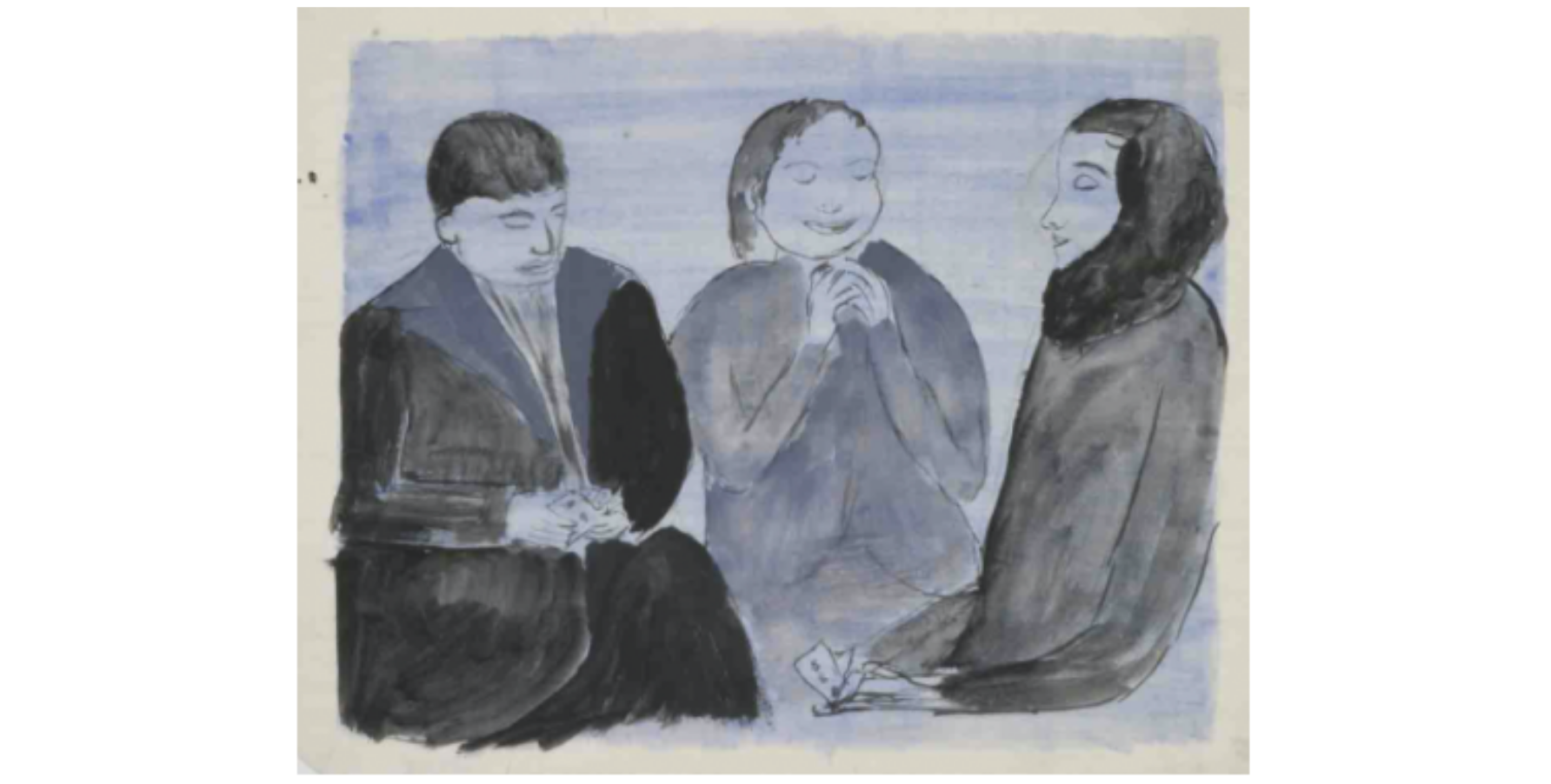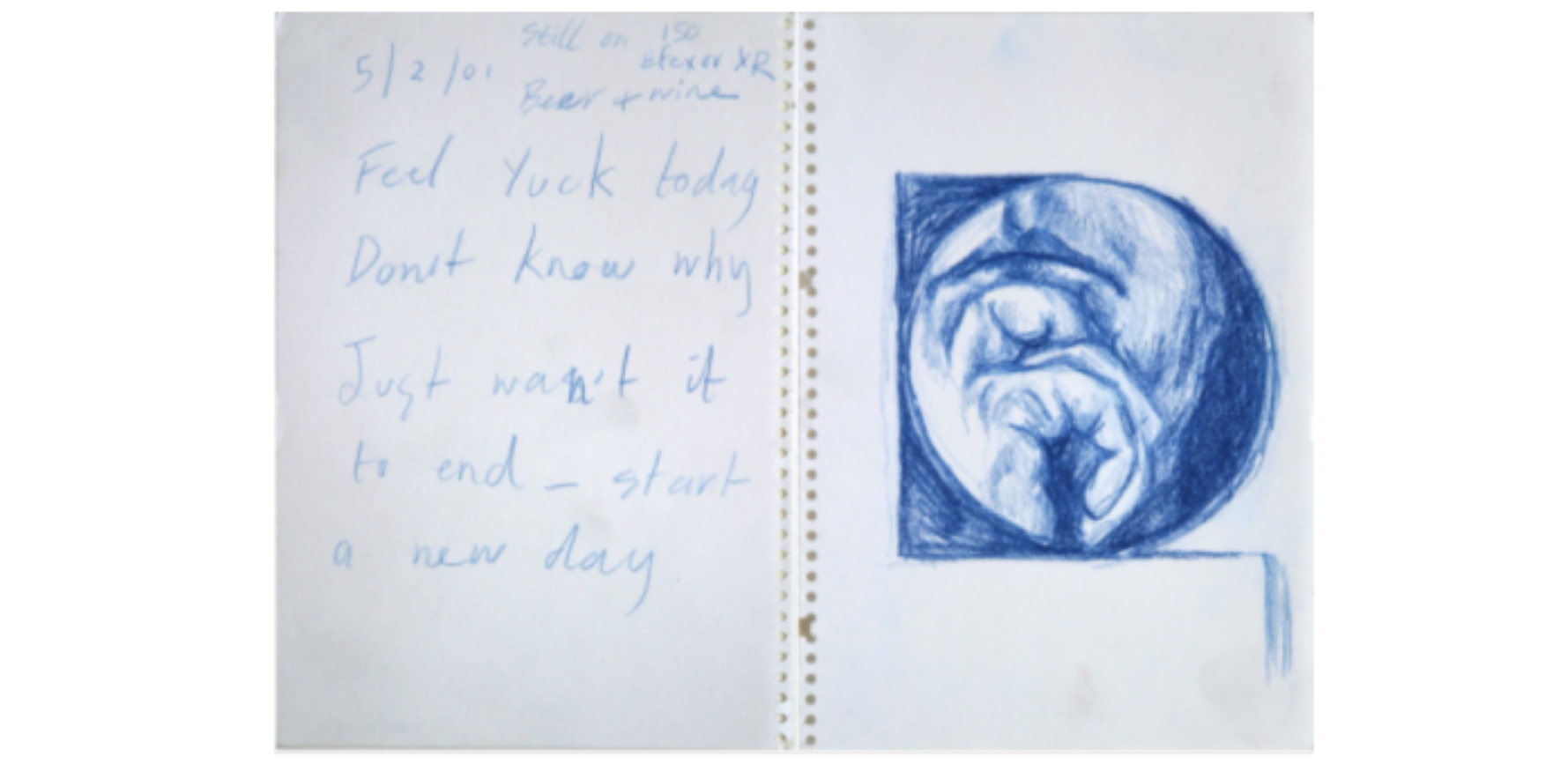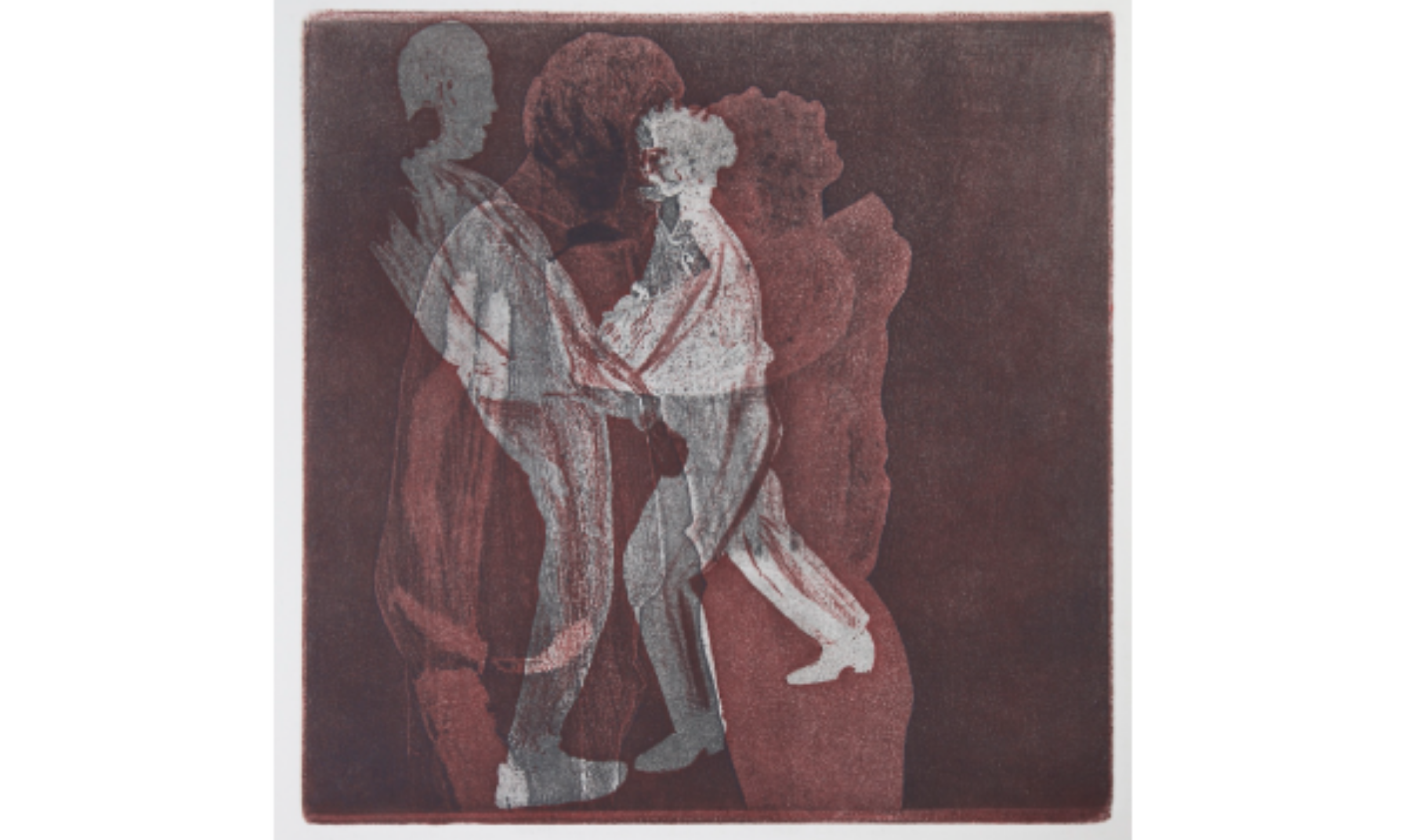Interiority

Many works in the Cunningham Dax Collection have been created by artists who use their practice as a potent way to process and share their experiences, past and present. As Patricia Stewart explains, her passion has been and is “to share my experience, strength and hope with others. I have found art to be a unique tool, in that, it has the potential to meet the needs of the traumatised soul”. This exhibition features works that invite us to explore the complexity of our interiority: a world of thoughts, feelings, hopes, fears and meaning.
The Cunningham Dax Collection comprises over 16,000 artworks created by people with an experience of mental health issues and/or psychological trauma. The Dax Centre aims to foster social change by expanding the public’s awareness of mental illness and breaking down stigma through art.
The collection was instigated by Dr. Eric Cunningham Dax, AO (1908 – 2008), a world-renowned psychiatrist who was the Chair of the Victorian Mental Hygiene Authority from 1952 to 1969. Dr. Dax is credited with being one of the first psychiatrists in the world to see the potential in utilising art for promoting better health for people living with mental illness.
‘Interiority’ is on show at The Mind Room from April to September 2021 and was curated by Megan Sheehy.
Renee Sutton
Born 1928, Melbourne

‘I don’t envy anyone with a full life. Some people have to keep up with the Jones’s but I’ve never been like that. Being satisfied with your lot I suppose isn’t it? I get what people who go to parties [get] and have a full life from painting. It’s the cheapest way I know of satisfying one’s desire for pleasure. I get pleasure from the finished work. I look at it and I think: “Did I really do that?”’
– Renee Sutton, Artist’s statement, March 2006
Renee Sutton made art for over 50 years. After completing her general nursing and midwifery training in Melbourne and working as a nurse in charge of the children’s ward at Mildura Base Hospital, she then travelled overseas. While living and working in London, Sutton explains that she had “overworked”, and was admitted to Bethlem Royal Hospital where she was treated for twelve months.
After her stay in hospital she travelled with her family throughout Scandinavia and, upon returning to Melbourne, resumed work as a private nurse in 1957. In 1958, she was admitted to Larundel Psychiatric Hospital where she was treated for a lengthy period of two years. It was here, as part of an occupational therapy program, that Sutton first began to paint on a regular basis.
For Sutton, her artworks gave her insight into her condition: “It has not only been therapy, but it’s helped me solve and realise problems and things I didn’t realise when I was younger.” In later years Sutton continued to paint and participated in numerous art classes. She was a member of Artbeat in Sandy Beach Centre, Melbourne, a practical and educational program for people to get together and explore and share ideas about art.
Julie Goodwin

“I have lived with depression on and off since childhood. After the birth of my third child I was diagnosed with postnatal depression. At this time I was struggling with caring for my children and the most basic household chores became exhaustingly difficult.
I started these Diary Portraits when I was really depressed and couldn’t get started on my usual large canvases that always took a lot of work and effort.
A friend suggested just doing a little picture of myself every day to get back into making some sort of art, and it would also give me a record of how I felt and looked every day.
Although some days it was extremely difficult to do anything, it did make me feel better once I got started. And on good days I enjoyed making my next entry. Sometimes I forgot to write anything down because I enjoyed the process of drawing so much.
I don’t do these any more as the need to create in this format is finished. Now I have gone back to my painting. However I am glad I did them at the time. They are small things that led me back to the big things.
I always used a mirror, but the choice of material and color was instinctive and I just let myself tune into my feelings. So whatever came out, came out. I didn’t plan it. And that’s probably why I look so different in all the pictures. Part of my obsessive thing was to always do things differently, even driving home from school a different way each day. I don’t do this any more.
Doing these portraits made me realise that by chipping away a little bit each day you end up with something big and meaningful at the end of it. I realised later that you can apply this to your life.”
– Artist statement, 2011
Patricia Stewart

“I draw and paint pictures that, in the main, have an emotional content evoked by an experience in my life, past or present.
My passion has been and is, to share my experience, strength and hope with others. I have found art to be, a unique tool, in that, it has the potential, to meet the needs of the traumatised soul.
My mother suffered from Munchausen Syndrome, she subjected me to Munchausen Syndrome, by Proxy, alternating between her own fictional illnesses, until she was ready to turn her attention to me, telling me, I was dying, that I would never have children. She subjected me to severe emotional abuse, constantly telling me that I was selfish, unworthy and calling ambulances to take me to hospital, and on it went. This caused me to suffer severe anxiety, chronic fear, and left me with no education. My mother had never been to school, and rarely sent me. The rare times she did send me were frightening, humiliating and intensely lonely experiences.
It also left me with a sense that I could not learn. I overcame that false idea, after my mother died and I set about getting an education. The consequences of my mother’s treatment, (I believe) led me to borderline personality disorder behaviours. I have endeavoured from a very young age, to sort out my confusion, self-destructive behaviour, anxiety and depression.
At regular intervals, I attended counselling from thirty-four years of age, until ten years ago. I had Electroconvulsive therapy (ECT) at age thirty-six. I am now eighty-one.
My creative interests have been the way I have used the negative feelings, thoughts and behaviours that had dogged me all my life. Writing, singing, dancing, music and more. I have kept extensive records of my journey, and used them in a fantasy styled play, in the lyrics of my songs, and in stories. I journaled my dreams for many years, and I learned a lot about the healing that was taking place within me, although it took many years for me to access that wisdom.”
– Artist’s statement
Kate Zizys

“The works are about the way the fires suddenly exposed the Valley. Before the fires there was evident disadvantage, poverty, violence, homelessness and mental illness. After the fires there was all this money around to run courses and participate in community programs–of course these programs have always been desperately needed and are still needed. So the work is about how the fires shed light, albeit a pretty violent light on social disadvantage. That light burnt bright for a short time–now there is no bushfire money left in the community, homelessness is still prevalent only worse because now there are more people without homes.
The fires also shed light on domestic violence in the community, difficulties associated with isolation, drunkenness, mental illness and social disadvantage suddenly floated up to the surface–all illuminated by those fires.
– Artist’s statement
Kate Zizys experienced the 2009 Victorian Black Saturday bushfires and their traumatic impact on the community. This is one of a series of art works she created in response to the fires.
…
If you require urgent mental health assistance please call Lifeline on 13 11 14 or use their Online Chat service www.lifeline.org.au.


